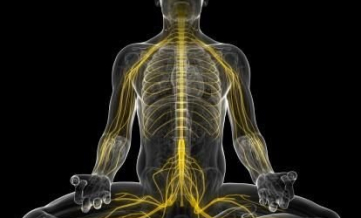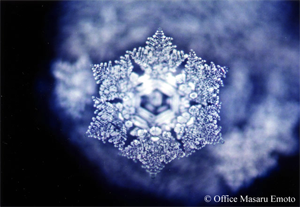Journey through South Africa’s sacred waters – from desert springs to ancestral caves & mystical lakes. Discover the spiritual power, rituals, and stories held.
BEZA Blogs
Let’s explore the teachings and practices of Zen Buddhism alongside Nature’s wisdom.
Part 3: Norway’s Sacred Waters: A Journey Through Myth, Ritual, and Flow
Journey through Norway’s sacred waters, from the mythic fjords to ancient rituals, where water weaves history, spirit, and transformation. Let the flow guide you.
Part 2: The Water Journey through the United Kingdom
Journey through the sacred waters of the United Kingdom, from Glastonbury’s Red and White Springs to the mystical falls of St. Nectan’s Glen. Discover the ancient flow of healing, legend, and transformation that whispers through time.
Part 1: Since The Beginning, Water Announces Life
Explore the sacred wisdom of the water element—its profound healing power, emotional intelligence, and spiritual significance in transformation, purification, and shamanic traditions. Dive into ancient rituals, elemental balance, and the flow of deep consciousness.
The Body’s Center: How the Hara, or Center of Gravity Functions in All Body Practices
In the realm of body practices, there exists a fundamental concept that serves as the anchor for balance, strength, and movement coordination. This concept is none other than the “Hara,” often referred to as the core or center of gravity. Whether you’re practicing yoga, martial arts, dance, or any physical discipline, understanding the significance of the hara is crucial for unlocking your body’s full potential and achieving optimal performance. In this article, we’ll delve into the intricacies of the hara, exploring its functions and importance across various body practices.
Body Mechanics, Hara and Healing
Body mechanics in simple terms is how we use and hold our bodies in our day-to-day lives. In technical terms, good body mechanics means using the body’s strength to the best mechanical advantage to do a task efficiently and without injury. Sometimes, this involves manipulating the way in which a task is done.
Body mechanics are utilized in day-to-day tasks from sitting, standing, lifting, carrying, bending, sleeping, and so on. The aspect of compensation falls into this category too. Meaning, if there is any form of incorrect compensation while doing an activity, we can throw out our entire body’s balance
and the result is pain. This will be explored in section three. The most common form of pain, when one has poor body mechanics/ incorrect compensation, is back and neck pain. Back muscles are used in nearly all movements and even a slight abnormal stress on a muscle can pull the spine out of alignment.
Dr. Masaru Emoto: How Emotion Influences Water
Water, the elixir of life, has been revered for its purity and essential role in sustaining all living beings on our planet. Dr. Masaru Emoto, a Japanese researcher, introduced a fascinating perspective on water’s properties by studying the influence of human emotions on its molecular structure. His pioneering work in the field of water crystal experiments has sparked both wonder and controversy, captivating the minds of many. In this article, we will delve into Dr. Emoto’s ideas, exploring the impact of emotions on water and the implications it holds for our daily lives.
Water, Weeping & Emotional Regulation through the Grieving Process
Also known as a natural antidote to counter-balance and tame other elemental emotions, water symbolizes compassion, healing, purity, impermanence, strength, flow, and emotions. In many cultures, water is considered to be a powerful source of cleansing and purification in body and mind. With the above said, the act of shedding tears is one of the ways in which the body can cleanse itself from pent-up trauma. Unfortunately, often crying is seen as a sign of weakness, however, many people are unaware of the power tears hold.
Communal Healing: How the Grieving Process Connects Community
Communal Healing: How the Grieving Process Connects Community.
Grief is an inherent part of the human experience, transcending cultural boundaries and affecting individuals and communities alike. In many societies, the process of healing from loss is deeply intertwined with communal support, offering solace, strength, and a shared space to navigate the intricate journey of grief. This article explores the significance of communal healing, focusing on the isiXhosa and isiZulu peoples of South Africa, as well as the ancient Dagara way of grieving in West Africa.
After Enlightenment, the Laundry – the Zen Experience
Enlightenment, a state of profound spiritual awakening, has been sought after by individuals across different cultures and religions throughout history. In Zen philosophy, enlightenment holds a special place, often portrayed as a transcendent experience that brings about profound transformation. However, the Zen masters teach us that the journey doesn’t end with enlightenment but rather continues into the fabric of everyday life. This article explores the concept of “After Enlightenment, the Laundry” and how mundane tasks can become a Zen experience.
Convalescence and Meditation
Convalescence is the gradual process of recovery in gaining back one’s health and strength to return to some or original form of functionality. The term has mainly been used in the past for chronic illness, however, the process of convalescence can be from an acute injury, surgery and even mental illnesses. The term is often used for the later stages of recovery.
The Path of Compassion
In a world where chaos and violence seem to be on the rise, the practice of compassion has never been more crucial. By cultivating a compassionate mind, we can not only bring peace and harmony to our inner selves, but also spread kindness and empathy to those around us. One of the most effective ways to develop compassion is through the practice of Zen, a spiritual tradition that emphasizes mindfulness, meditation, and non-judgmental awareness. In this article, we will explore how Zen can help us embrace compassion and kindness in our daily lives.
Silent Zen Meditation: A Path to Inner Peace and Self-Awareness
Silent Zen meditation is a form of meditation that involves sitting in a relaxed yet alert posture and focusing on the breath while maintaining a quiet and still mind.. In this article, we will explore the history and benefits of silent Zen meditation, the challenges that one may encounter during the practice, and how to integrate it into daily life.











